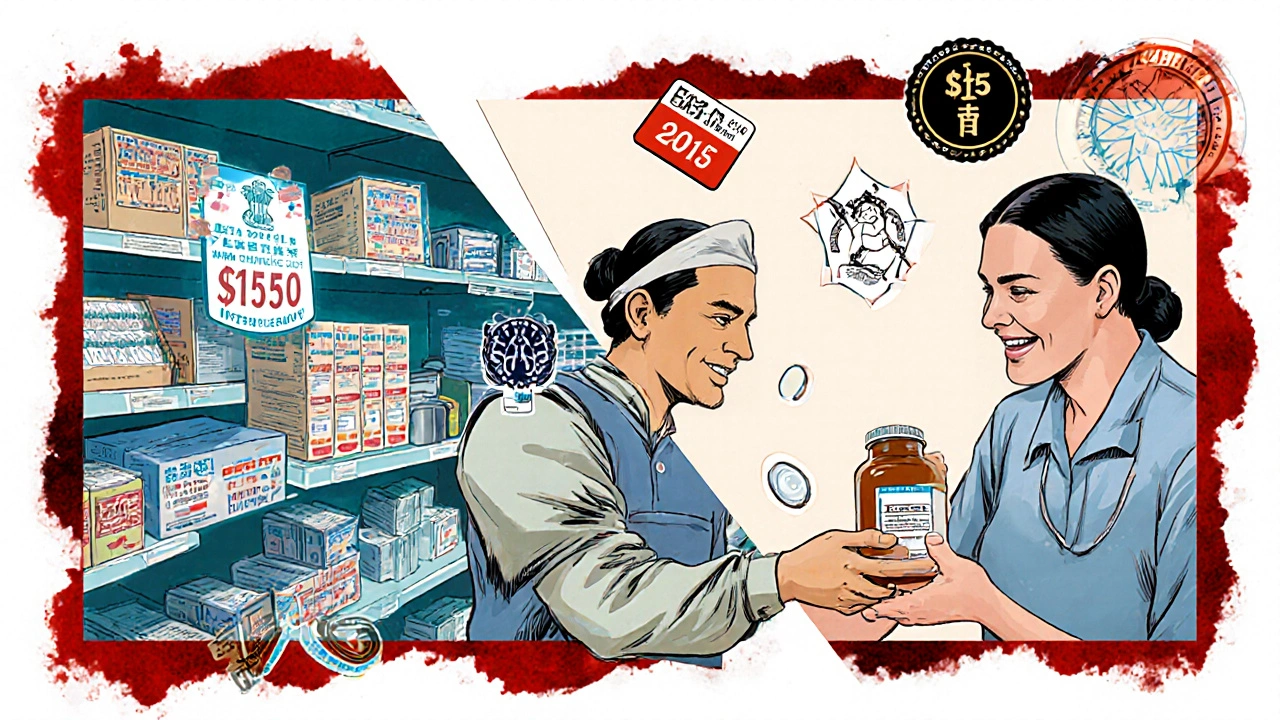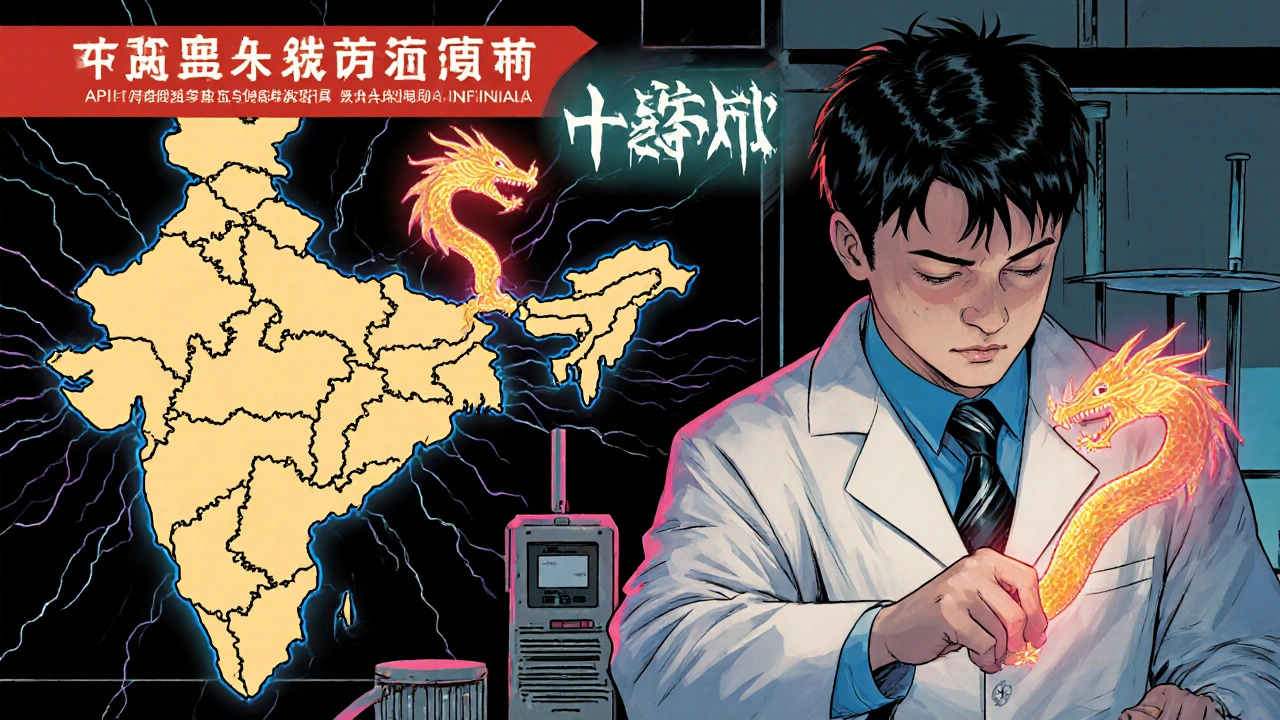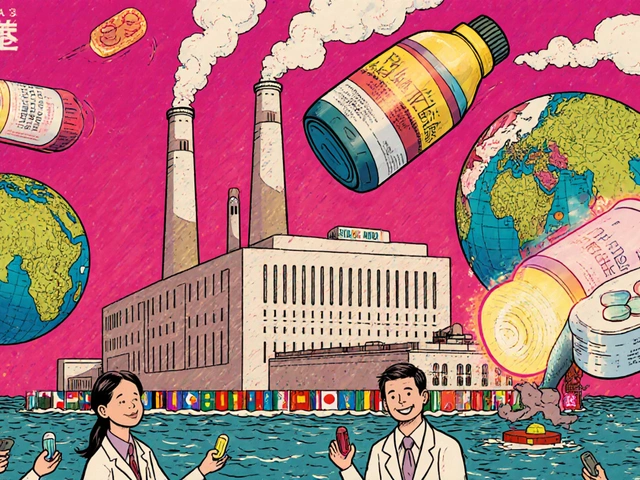How India Became the Pharmacy of the World
India doesn’t just make medicines-it supplies them to nearly every country on Earth. From a small village clinic in rural Kenya to a public hospital in New York, chances are the pills you take were made in India. This isn’t luck. It’s the result of deliberate policy, decades of manufacturing expertise, and a relentless focus on affordability. By the 1970s, India changed its patent laws to allow local companies to copy patented drugs. That single move turned India into the world’s largest producer of generic medicines. Today, it supplies 20% of all generic drugs shipped globally by volume, and over 60% of the world’s vaccines.
Why Indian Generics Are So Cheap
Indian manufacturers don’t cut corners-they cut costs smartly. A branded heart medication might cost $150 a month in the U.S. The same generic version from India? Around $15. That’s not magic. It’s scale. India has over 10,000 drug manufacturing units and more than 3,000 pharmaceutical companies. These factories operate with lower labor costs, streamlined supply chains, and no need to recoup billions spent on drug research. The result? Generics that are 30% to 80% cheaper than branded versions. And despite the low price, they meet global standards. Over 650 Indian plants are approved by the U.S. FDA-the most outside the U.S. itself. Another 2,000+ follow WHO-GMP rules, letting them export to over 150 countries.
Who Uses Indian Generic Drugs?
The answer is almost everyone. In the United States, Indian companies supply about 40% of all generic prescriptions. In the UK, they make up 33% of NHS drug supplies. In Sub-Saharan Africa, nearly 50% of all medicines come from India. For countries with tight healthcare budgets, this is life-saving. In 2024, Doctors Without Borders reported that Indian-made antimalarials and antibiotics cut treatment costs by 65% while keeping 95% effectiveness. In the U.S., 87% of patients using Indian generics report satisfaction, mainly because they can finally afford their prescriptions. Even Medicare and Medicaid rely on these drugs to control spending.

Quality Concerns-Real or Overstated?
There’s no denying some Indian-made drugs have caused problems. In 2025, The Bureau of Investigative Journalism found a handful of cases where contaminated or mislabeled medicines led to harm. But these are rare. The FDA’s compliance rate for Indian factories has jumped from 60% in 2015 to 85-90% today. That’s on par with global averages. Most issues come from small, unregulated suppliers-not the big players like Sun Pharma, Cipla, or Dr. Reddy’s. Consumers sometimes complain about taste differences or inconsistent packaging, but those don’t affect how well the drug works. A Reddit thread from May 2024 highlighted a batch of levothyroxine with inconsistent absorption, but that was traced to a single manufacturer’s error, not a systemic failure. The industry’s response? Stricter rules. In February 2024, India updated its Schedule M guidelines to raise manufacturing standards even higher.
The API Problem: India’s Hidden Weakness
Here’s the catch: India makes the pills, but it doesn’t make most of the active ingredients inside them. About 70% of its active pharmaceutical ingredients (APIs) come from China. That’s a major vulnerability. When China slowed exports during the pandemic, India felt it. The government is trying to fix this. A ₹3,000 crore ($400 million) Production Linked Incentive (PLI) scheme is now pushing local companies to produce APIs at home. The goal? Cut reliance on China to under 50% by 2026. It’s a tough goal. Building API plants takes billions and years. But if India succeeds, it won’t just be the pharmacy of the world-it’ll be the engine behind it.
From Generics to Biosimilars: The Next Chapter
India isn’t resting on its low-cost legacy. The big players are moving upmarket. Biosimilars-highly complex copies of biologic drugs like cancer treatments-are now 8% of India’s export value, up from just 3% in 2020. Companies like Biocon and Dr. Reddy’s are spending over $500 million a year to develop them. These drugs cost $10,000 to $100,000 in the U.S. but can be made in India for under $5,000. That’s a game-changer for patients with autoimmune diseases or cancer. India is also getting better at making complex formulations: extended-release tablets, transdermal patches, and sterile injectables. These aren’t easy to copy. They require advanced tech and skilled workers. India has both.

Big Players, Big Numbers
India’s pharmaceutical industry isn’t a bunch of small shops. It’s dominated by giants. Sun Pharma, with a market cap of ₹366,456 crore ($43 billion), is the largest. Cipla and Dr. Reddy’s follow close behind. These companies don’t just sell pills-they run global R&D labs, FDA-compliant factories, and export networks spanning continents. In 2023, the Indian pharma industry was worth $50 billion. By 2030, it’s expected to hit $130 billion. The domestic generic market alone is projected to grow from $28 billion in 2024 to over $51 billion by 2033. That growth won’t come from making more cheap tablets. It’ll come from selling more high-value drugs to richer markets.
Challenges Ahead
India’s model has worked for decades, but it’s under pressure. The U.S. removed India’s GSP trade benefits in 2019, raising tariffs on $5.6 billion in exports. Regulatory inspections are still tough-35-40% of companies fail their first FDA audit. Translation errors in paperwork cause delays. And while India makes 60,000 generic drugs, it still doesn’t invent many new ones. Western pharma giants spend 20% of revenue on R&D. India spends closer to 5%. To move from exporter to innovator, it needs to change that. The government’s Pharma Vision 2047 aims to make India a $190 billion export powerhouse. That’s ambitious. But it’s possible-if India can solve its API problem, raise compliance to 95%, and invest in biosimilars and new drug delivery systems.
What This Means for You
If you’re a patient, Indian generics mean you can afford your medicine. If you’re a healthcare system, they mean you can treat more people. If you’re a policymaker, they mean you need to support quality control-not block imports. The truth is, the world depends on India’s ability to make safe, cheap drugs. And while no system is perfect, the scale, compliance, and cost-effectiveness of Indian manufacturers have saved millions of lives. The next decade won’t be about more pills. It’ll be about better pills. And India is already building them.


Denny Sucipto
I got my blood pressure meds from India last year-paid $12 for a 90-day supply. In the U.S., it was $180. No joke. My grandma’s alive because of this. 🙌
Christine Eslinger
It’s wild how the world depends on India’s manufacturing muscle. They didn’t just copy drugs-they perfected scaling them. The FDA approvals speak louder than any marketing campaign. This isn’t charity-it’s competence. And it’s saving lives by the millions. We should be thanking them, not scrutinizing every batch like it’s a crime scene.
Holly Powell
Let’s not romanticize this. The API dependency on China is a systemic vulnerability. We’re outsourcing national health security to a geopolitical rival with zero transparency. The PLI scheme is a Band-Aid on a hemorrhage. And let’s not forget: 85% FDA compliance? That still means 1 in 7 factories are borderline criminal. This isn’t a success story-it’s a ticking time bomb wrapped in a white pill.
Emanuel Jalba
I can’t believe people are okay with this 😭 The U.S. is literally letting foreign companies control our medicine supply. What if they decide to stop? What if they poison us? 🤯 This is worse than 9/11. Someone’s gotta wake up! 🚨 #PharmaCrisis #AmericaFirst
Heidi R
You’re all ignoring the real issue: these companies are exploiting labor in India. Cheap drugs = cheap people. Wake up.
Shaun Barratt
The structural efficiency of India’s pharmaceutical ecosystem is remarkable. The absence of patent monopolies, combined with economies of scale and regulatory alignment with international standards, has created a uniquely resilient supply chain. One must acknowledge that the cost differential is not indicative of inferiority, but rather of differential capital allocation.
Louie Amour
Oh please. You think these Indian factories are clean? I’ve seen the reports. They use recycled plastic for vials. They skip sterilization. You think your ‘$15 pill’ is safe? You’re just lucky you haven’t ended up in the ICU. And don’t give me that FDA crap-they’re bribed.
Kristina Williams
China owns India’s API supply. India owns your pills. Who owns China? The CCP. So technically, the Chinese government controls your medicine. This is a bio-warfare vector. They’re waiting for the right moment to cut off supply. You think this is coincidence? Think again.
Shilpi Tiwari
As someone who works in API logistics in Gujarat, I can tell you the PLI scheme is already shifting things. We’re building two new API plants this year. The government’s pushing hard-subsidies, tax breaks, land allocation. It’s slow, but it’s real. The myth that we’re just ‘copycats’? Outdated. We’re now developing novel drug delivery systems. Biosimilars? We’re ahead of Europe on some. The world just doesn’t notice because we’re too busy making pills, not press releases.
Brenda Kuter
I JUST FOUND OUT MY MOM’S MEDS ARE FROM INDIA AND NOW I’M SCARED TO SLEEP 😭 SHE’S GOT CANCER AND I THOUGHT IT WAS AMERICAN!! THIS IS A TRAGEDY!! 🚨💔 #SaveOurMedicines #IndiaIsDangerous
Iska Ede
Oh wow, so we’re supposed to be grateful that a country with 1.4 billion people can make pills cheaper than we can? Congrats, we lost. Maybe if we didn’t spend $5 billion on celebrity lawsuits, we could’ve built our own factories. But nah, let’s just keep paying $200 for insulin while India feeds the world. 🤡
Gabriella Jayne Bosticco
I’ve been prescribing Indian generics for years. My patients in rural Wales couldn’t afford anything else. The adherence rates? Higher than with branded stuff. Why? Because they can actually afford to take them. It’s not about patriotism or politics-it’s about access. And honestly? The quality’s fine. I’ve never seen a patient harmed by a properly sourced Indian generic.
Sarah Frey
The global health architecture is predicated on equitable access. India’s role as a producer of affordable, high-quality generics represents a critical counterbalance to the profit-driven pharmaceutical model of the Global North. The challenges-API dependency, regulatory hurdles-are not failures of character, but structural constraints that demand international cooperation, not condemnation. To vilify India’s contribution is to vilify the principle of health as a human right.